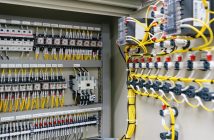The uptake in hybrid and remote working is drastically affecting CBD occupancy levels and complicating the allocation of resources, maintenance and utilities as worker patterns become harder to predict, says Bentley Systems Regional Executive Fergus Dunn

This new way of working impacts the physical landscape in which we work, as well as the factors that contribute to this environment. For example, energy consumption patterns and building capacity demand are two areas that have been indirectly impacted by the shift to hybrid work and remote working models.
One of the main challenges is the occupancy level nose-dive of central business districts (CBDs) and in Australia, office occupancy levels are changing as often as week to week. As of July 2022, Melbourne’s CBD sat at only 38% office occupancy, followed by Sydney at 52%, Brisbane at 53%, Canberra at 61%, Adelaide at 64%, and Perth being the highest level at 71%.
This has challenged building managers and owners with pinpointing the most efficient allocation of utilities and resources, despite limitations in predicting employee movement and energy consumption patterns as we may have once been able to.
The result of this volatility and lack of real-time visibility is likely contributing to an incredible cost in wasted energy. While these changes can be managed with the right infrastructure technology, the industry is yet to undergo widespread adoption of these tools.
Enter Digital Twin Technology
A digital twin is a digital representation of a physical object or process. The twin is connected to the physical asset and when in use, captures its data and performance in real-time, unlocking its value and creating the opportunity to feedback necessary changes back into the physical twin.
In the case of optimising infrastructure technology, a digital twin enables the identification of patterns and trends that are emerging in our new hybrid working world.
An infrastructure digital twin harnesses the power of 3D and 4D visualisation and modelling technologies. With this, building managers and owners can make optimisations, such as energy efficiency, to match the needs of their workers and, in the process, secure better commercial outcomes.
For instance, an infrastructure digital twin for an office building that now houses 60% of its previous occupancy level will be able to measure a new timeline for predictive maintenance based on the shifted rate at which utilities are being consumed.
A digital twin will also help proactively identify future infrastructure risks, altogether amounting to time and cost savings that can be reinjected into areas more in need of immediate attention.
Not only can a digital twin be beneficial to one singular office, building manager, or owner, but the information gained from that one digital twin can be shared to deliver industry-wide efficiencies through open data sharing. The learnings at every stage of use can be brought back to the beginning of a new project, creating a pathway toward an entirely optimised industry.
The benefits of utilising digital twin technology are threefold:
- People – a digital twin provides the ability to predict and match people’s needs, resulting in higher satisfaction within physical assets such as office buildings, as well as optimising the use of our tax money when designing and operating buildings.
- Profit – a digital twin optimises the allocation and use of resources, enabling commercial cost savings and higher profit margins.
- Planet – a digital twin enhances visibility into the level of, and how pollution is being created by a physical asset. For example, some digital twin technologies have the ability to calculate the carbon content of buildings and infrastructure through its lifecycle assessment integration. This enables users to make informed decisions on how to reduce their pollution.
There are multiple opportunities for the infrastructure industry to realise the benefits of digital twin technology. One of which is the ability to improve efficiencies in our current transition toward a hybrid working world.
By adopting this technology, building managers and owners can unlock data in real time to safely and efficiently optimise buildings and achieve better commercial and environmental outcomes.












